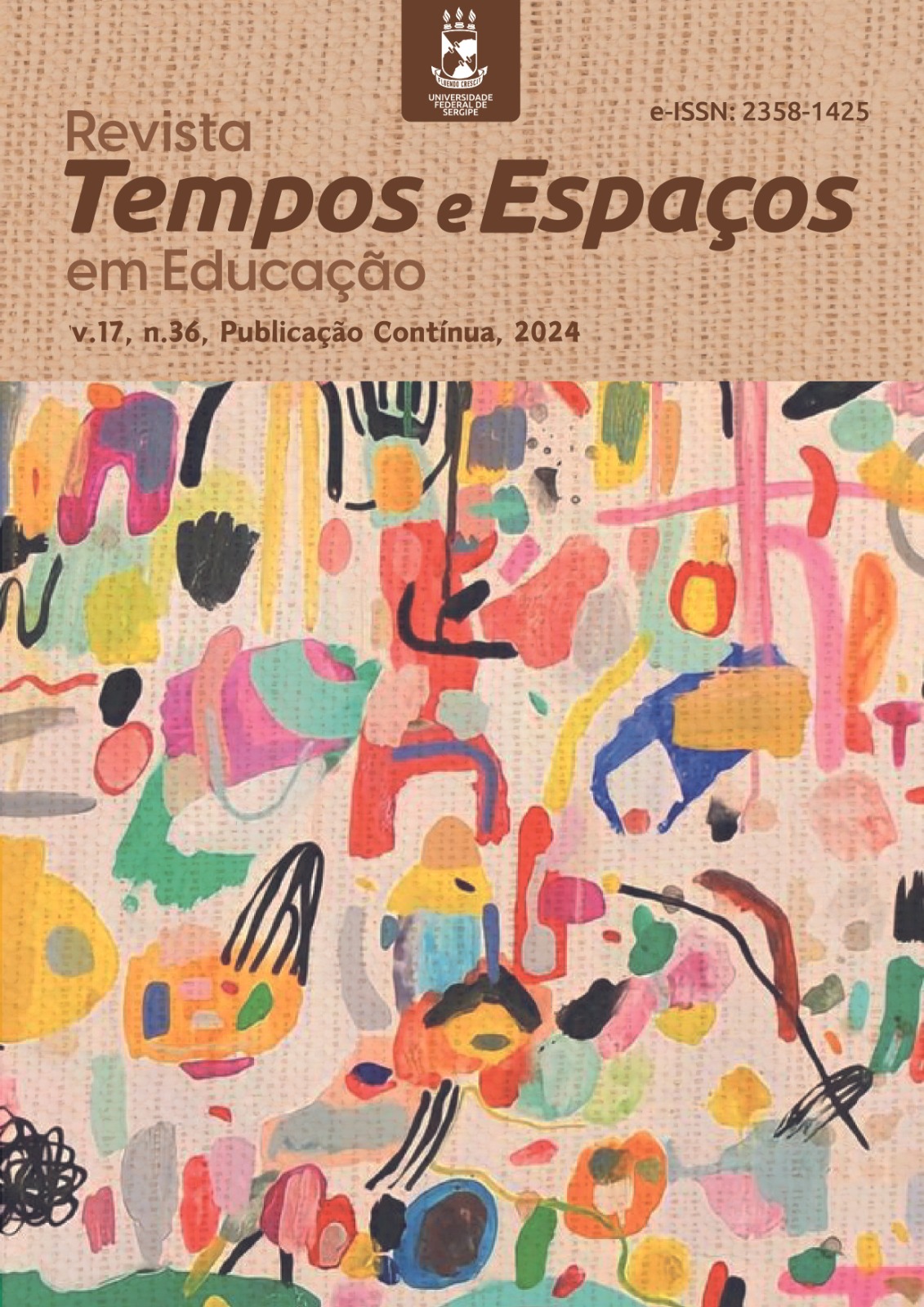At the Foot of the Mountain: the intersectionality of gender and caste as a cycle of violence against Nepali Women
DOI:
https://doi.org/10.20952/revtee.v17i36.20108Keywords:
Difference, Women's Rights, Intersectionality, Nepali Women, Gender ViolenceAbstract
This article addresses the intersectionality of gender and caste as a cycle of violence against girls and women in Nepal. Due to the deep roots of patriarchal culture in Nepali society, being born with biological and anatomical characteristics related to the feminine is a reason for significant exclusion and social subalternization. Furthermore, being born into the social condition of Dalit and still being a woman means being subject to the cruelest discrimination and segregation. In the configuration of the text, we sought to introduce geopolitical information about the country and the place in which the feminine finds itself facing the tentacles of patriarchy in the historical, cultural, social, political and economic sphere. Anchored in the contributions of feminist theory, it is possible to understand the roots of the cycle of abysmal violence against Nepalese women, but also to perceive their resilience and empowerment through their voices echoed as poetic literature. The conclusions point to the emergence of a global feminist movement that embraces the voices and demands of girls and women in Nepal.
Downloads
References
Andrade, J. (2020). Teoria do Karma, sistema das castas e conceito da reencarnação e seu impacto na sociedade indiana: uma leitura antropo-filosófica. Basilíade –Revista de Filosofia, 2(4), 85-98. DOI: https://doi.org/10.35357/2596-092X.v2n4p85-98/2020
Asian Development Bank (ADB). (April, 2022). Nepal: Macroeconomic Update (Vol. 10). Kathmandu: Asian Development Bank.
Beauvoir, S. d. (1967). O Segundo Sexo: a experiência vivida (2 ed., Vol. II). (S. Milliet, Trad.) São Paulo: Difusão europeia do Livro.
Beauvoir, S. d. (1970). O Segundo Sexo: fatos e mito (4 ed., Vol. 1). São Paulo: Difusão Europeia do Livro.
Channon, M., Puri, M., Gietel-Basten, S., Stone, L., & Channon, A. (2021). Prevalence and correlates of sex-selective abortions and missing girls in Nepal: evidence from the 2011 Population Census and 2016 Demographic and Health Survey. BMJ Open, 11(3), 1-11. DOI: https://doi.org/10.1136/bmjopen-2020-042542
Countrymeters. (2023). Nepal Population. Disponível em https://countrymeters.info/en/Nepal#literacy Acesso em 25 de ago de 2023.
Frost, M. D., Puri, M., & Hinde, P. R. (2013). Falling sex ratios and emerging evidence of sex-selective abortion in Nepal: evidence from nationally representative survey data. BMJ Open, 3(5), 1-7. https://doi.org/10.1136%2Fbmjopen-2013-002612 DOI: https://doi.org/10.1136/bmjopen-2013-002612
Gahatraj, R., & Chaudhary, A. (2022). Gender bias forcing women into sex-selective abortions. Disponível em https://kathmandupost.com/province-no-5/2022/01/13/gender-bias-forcing-women-into-sex-selective-abortions
Giri, B. (1991). Woman (Aimai). Em M. J. Hutt, Himalayan Voices: An Introduction to Modern Nepali Literature (M. J. Hutt, Trad., pp. 139-140). Berkeley: University of California.
Global Finance Magazine (GFM). (2021). Poorest Countries in the World 2021. Disponível em https://www.gfmag.com/global-data/economic-data/the-poorest-countries-in-the-world
Grigaitė, U. (2018). Witchcraft Accusation and Persecution of Women in Nepal. Vilnius: URM. Disponível em https://www.vbplatforma.org/uploaded_files/articles/Nepal%20WAP%20Report.pdf
Hutt, M. J. (1991). Himalayan Voices: An Introduction to Modern Nepali Literature. (M. J. Hutt, Trad.) Berkeley: University of California.
Iwgia. (2023). The Indigenous World 2023: Nepal. Disponível em https://www.iwgia.org/en/nepal/5129-iw-2023-nepal.html
Joshi, S. (2022). Chhaupadi practice in Nepal: a literature review. World Medical & Health Policy, 14(1), 121-137. DOI: https://doi.org/10.1002/wmh3.491
Karki, S. (2023). Dalit lives must matter. Disponível em https://www.nepalitimes.com/here-now/dalit-lives-must-matter
Lawoti, M., & Hangen, S. (2012). Nationalism and Ethnic Conflict in Nepal: Identities and Mobilization after 1990. London; New York: Routledge. DOI: https://doi.org/10.4324/9780203118269
Little Sisters Fund (LSF). (2020). Facts About Girls Education In Nepal. Disponível em https://littlesistersfund.org/2020/03/04/6-facts-about-girls-education-in-nepal/
Moura, V. S. (2020). Spirit Me Away: The women and girls lost to trafficking in Nepal. Disponível em https://www.aljazeera.com/gallery/2020/3/8/spirit-me-away-the-women-and-girls-lost-to-trafficking-in-nepal
Nepali, D. (2016). Deepa's Poem. Disponível em Blinknow.org: https://blinknow.org/journal/entry/deepas-poem
Ohchr. (2021). Nepal must now deliver on promise of social justice - UN human rights expert. Disponível em https://www.ohchr.org/EN/NewsEvents/Pages/DisplayNews.aspx?NewsID=27936&LangID=E
Orrú, S. E. (2023). Mulheres em Águas de Piratas: Vozes insurgentes da América Latina, África e Ásia em luta contra o patriarcado. São Paulo: Dialética. DOI: https://doi.org/10.48021/978-65-252-7984-8
Parijat. (1991). In the Arms of Death (Mrityuka Angalama). Em M. J. Hutt, Himalayan Voices: An Introduction to Modern Nepali Literature (M. J. Hutt, Trad., pp. 117-119). Berkeley: University of California.
Plastino, C. A. (2016). Do paradigma da dominação ao paradigma do cuidado. Divulgação em Saúde para Debate(53), 25-40.
Ratcliffe, R. (2019). Young woman dies in fourth ‘period hut’ tragedy this year in Nepal. Disponível em https://www.theguardian.com/global-development/2019/feb/06/young-woman-dies-fourth-period-hut-tragedy-this-year-nepal
Schmidt, S. P., & Macedo, A. G. (2019). Feminismos Transnacionais: saberes e estéticas pós/decoloniais. Revista Estudos Feminista, 27(1), 1-5. https://doi.org/10.1590/1806-9584-2019v27n158959 DOI: https://doi.org/10.1590/1806-9584-2019v27n158959
Shah, K., Gyawali, B., & Aro, A. R. (2018). Ending discrimination at the womb: Ethical perspectives on tackling female feticide in Asian countries. Ethics, Medicine and Public Health, 6, 52-58. https://doi.org/10.1016/j.jemep.2018.07.006 DOI: https://doi.org/10.1016/j.jemep.2018.07.006
Singh, R., Mahat, S., Singh, S., Nyamasege , C. K., & Wagatsuma , Y. (2021). The relationship between pelvic organ prolapse and short birth intervals in a rural area of Nepal. Tropical Medicine and Health, 49(5). https://doi.org/10.1186/s41182-021-00298-z DOI: https://doi.org/10.1186/s41182-021-00298-z
Spivak, G. C. (1997). Feminismo e desconstrução, de novo: negociando com o masculinismo inconfesso. Em T. Brennan, Para Além do Falo: uma crítica a Lacan do ponto de vista da mulher (A. Xavier, Trad., pp. 277-297). Rio de Janeiro: Record. Rosa dos Tempos.
Spivak, G. C. (2010). Pode o subalterno falar? (S. R. Almeida, M. P. Feitosa, & A. P. Feitosa, Trads.) Belo Horizonte: UFMG.
Unesco. (2021). How UNESCO is reaching marginalized communities in Nepal with literacy. Disponível em https://en.unesco.org/news/how-unesco-reaching-marginalized-communities-nepal-literacy#:~:text=One%20of%20the%20key%20aspects,all%20seven%20of%20Nepal's%20provinces.
United Nations. (2018). Committee on the Elimination of Racial Discrimination examines report of Nepal. Disponível em https://www.ohchr.org/en/press-releases/2018/05/committee-elimination-racial-discrimination-examines-report-nepal
Downloads
Published
How to Cite
Issue
Section
License
Copyright (c) 2024 Revista Tempos e Espaços em Educação

This work is licensed under a Creative Commons Attribution 4.0 International License.
À Revista Tempos e Espaços em Educação ficam reservados os direitos autorais pertinentes a todos os artigos nela publicados. A Revista Tempos e Espaços em Educação utiliza a licença https://creativecommons.org/licenses/by/4.0/ (CC BY), que permite o compartilhamento do artigo com o reconhecimento da autoria.



